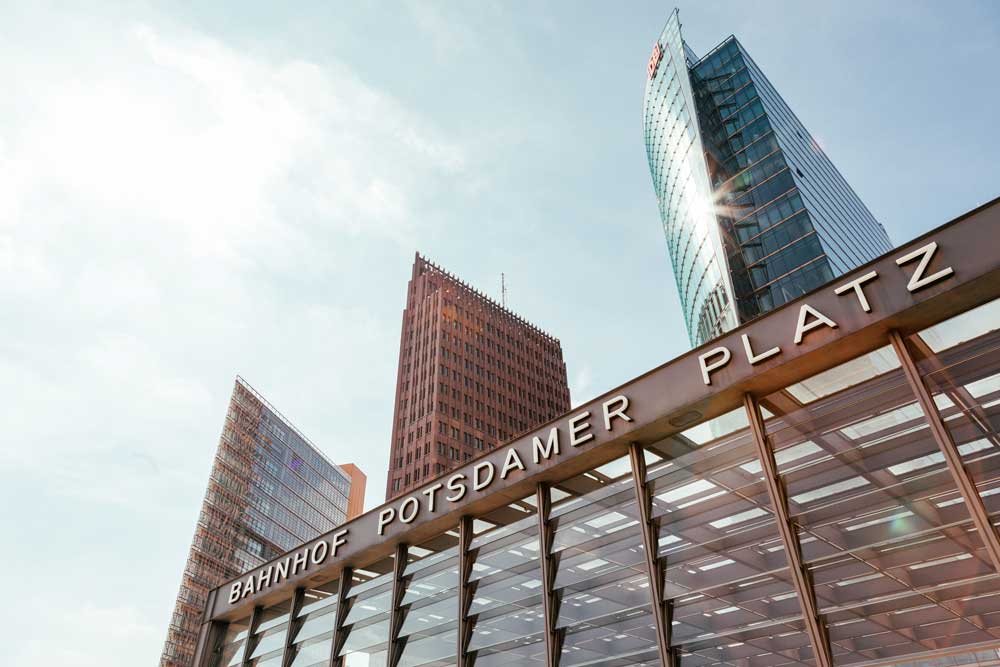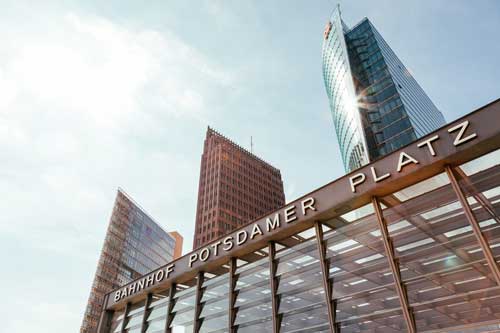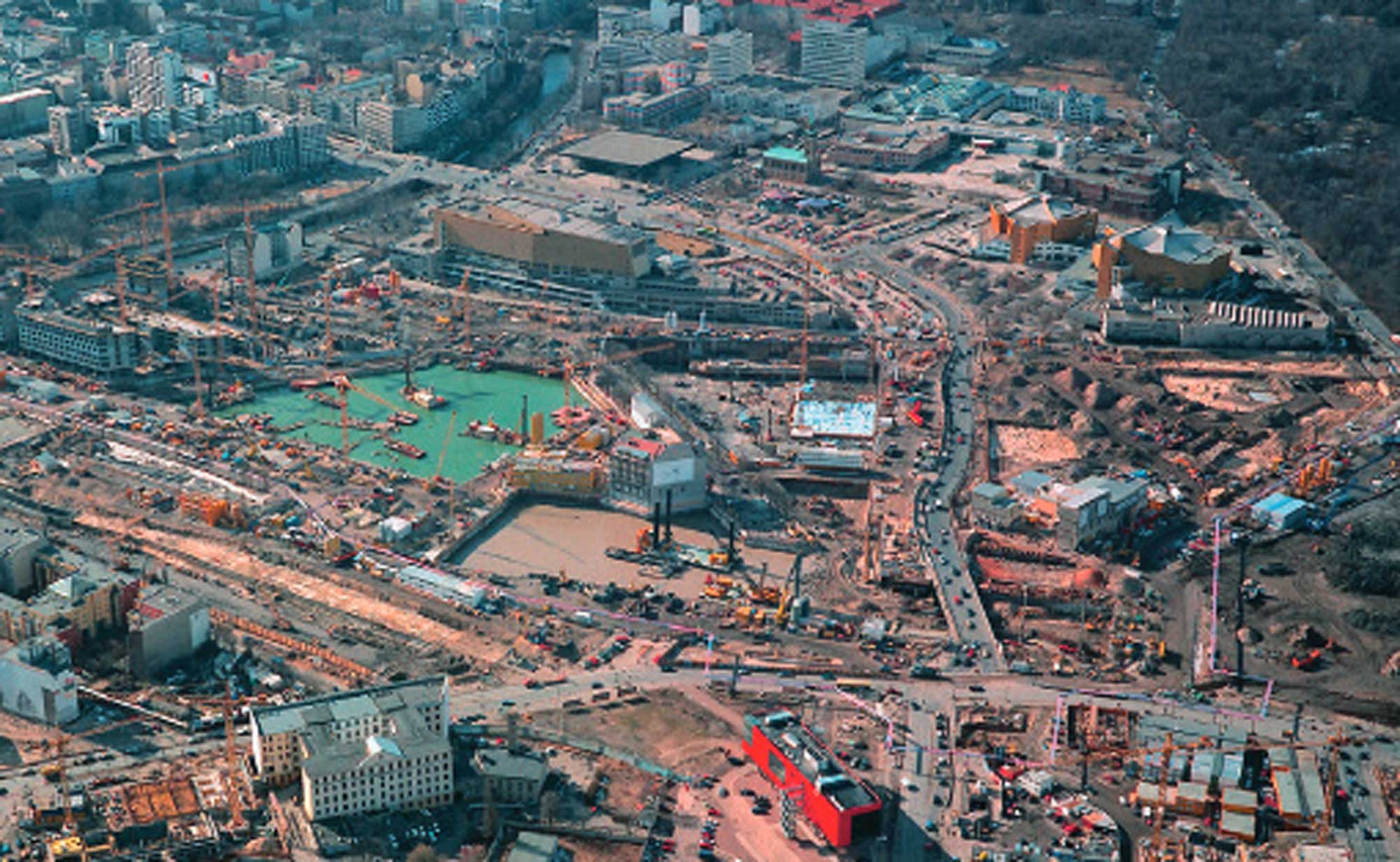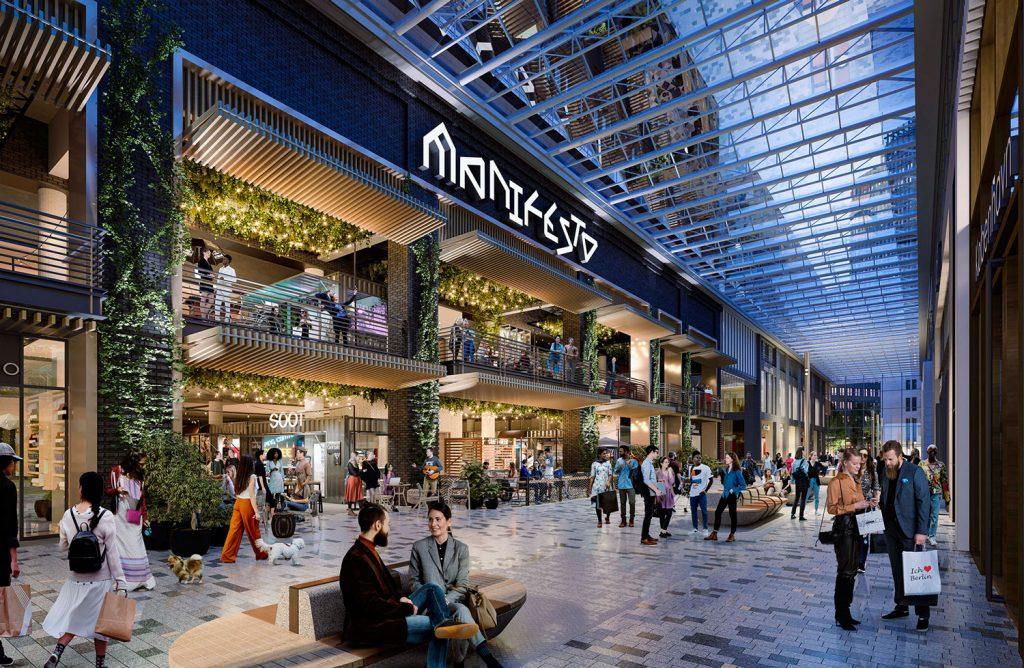

POTSDAMER PLATZ
A square that has made history and tells Instagram stories.
Potsdamer Platz has always
been a place of great attraction
for Berliners and tourists alike.
History of the Potsdamer Platz
In 1838, the “conquest ” of the meeting place, then called “Platz vor dem Potsdamer Thor” (Square in front of Potsdam Gate), began. This was due to the opening of the Potsdam railway station.
The building boom continued in the years after the foundation of the German Empire – wealthy citizens moved into the Tiergarten villas in the vicinity. Hotels such as the “Grand-Hotel Bellevue”, the “Palast-Hotel” and other projects were founded in the area around the turn of the century.
Potsdamer Platz went down in history as the busiest square in Europe in the 1920s. With a daily volume of 20,000 cars and around 83,000 travellers at the railway station, the first urgently needed traffic lights in Europe were installed.
But social life was not neglected either: balls and receptions as well as restaurants (including the “Meisel-Pschorr” brewery or the “Rheinterrassen”) consolidated the reputation of the Golden Twenties.
Even the Second World War could not harm the reputation of Potsdamer Platz – apart from a few drawbacks. Though the buildings were almost completely destroyed, this image changed again with the introduction of the Deutschmark and the beginning of the Berlin Blockade. During the uprising of 1953, however, the makeshift buildings burned down again. The investors were threatened with a long-term loss of interest.
The years-long division of Germany once ran right across Potsdamer Platz. It was declared a border area and initially became sadly infamous: the widest death strip along the Berlin Wall ran exactly through the area. The square, which was once filled with a boisterous atmosphere, lived a shadowy existence and visibly fell into disrepair.
When the borders disappeared, Potsdamer Platz soon returned to its former vigour.
After the fall of the Wall on 9 November 1989, efforts were made to restore the dynamic at Potsdamer Platz just four days later. The first provisional border crossing was set up here.
The new centre of Berlin was built. The construction earned Potsdamer Platz the additional title of “Europe’s largest construction site”.
The international star architect Renzo Piano presented his concept of a “City for the 21st Century”, which finally prevailed over the competitors.
Potsdamer Platz today
Today, Potsdamer Platz is the hub of the German capital. The high volume of traffic of former times has returned, as has a colourful concept of history, tradition and culture.


Potsdamer Platz in figures
The “Quartier Potsdamer Platz”, which has existed since 2 October 1998, comprises …
A new world of experience is being created – THE PLAYCE

The "inhabitants" of Potsdamer Platz in detail:
- two top-class hotels
- a cinema with 19 screens
- two theatre venues (including the well-known “Stage” theatre)
- a casino
- two sophisticated nightclubs with a total capacity of up to 1,200 guests
- Potsdamer Platz Arkaden with over 130 shops
- 30 restaurants, bars and cafés to suit every taste
The most important skyscrapers
Buildings that rise high into the sky are impressive and imposing at the same time. These include …
- the Daimler Chrysler Quartier
- the Deutsche Bahn-Tower
- the Beisheim Center
- the Sony Center
- the Kollhoff Tower
Special characteristics of Potsdamer Platz
Historically, Potsdamer Platz not only features Europe’s first set of traffic lights:
From 1838, the line of the first railway station in Berlin and Prussia led from here to the west – thus establishing the main entrance to the city.
From 1880, the first horse-drawn tram line ran via Potsdamer Platz all the way to Schöneberg.

